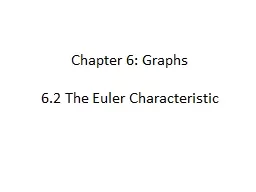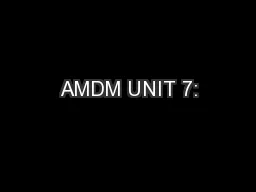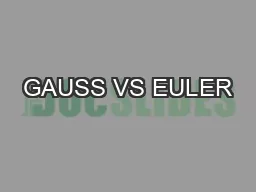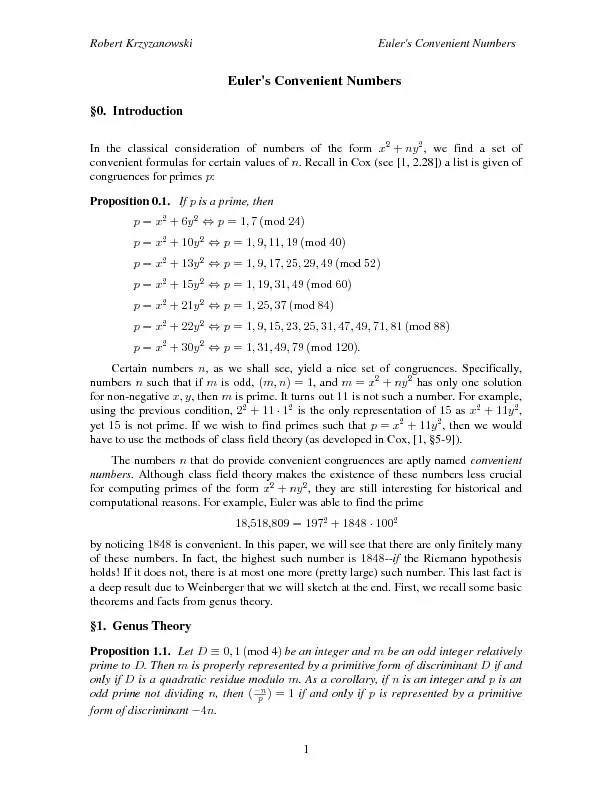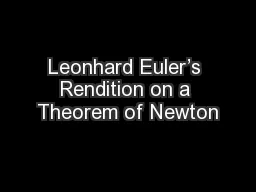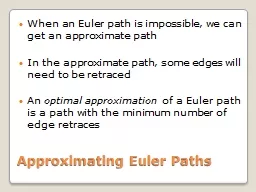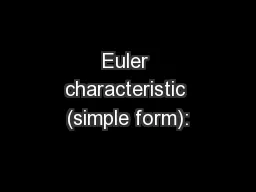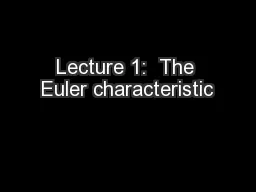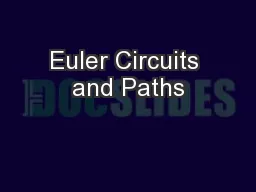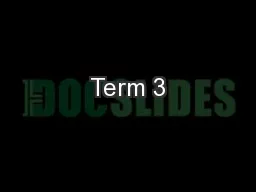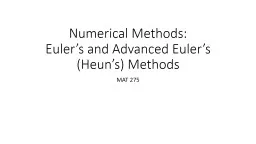PPT-Chapter 6: Graphs 6.2 The Euler Characteristic
Author : tatiana-dople | Published Date : 2019-12-05
Chapter 6 Graphs 62 The Euler Characteristic Draw A Graph Any connected graph you want but dont make it too simple or too crazy complicated Only rule No edges can
Presentation Embed Code
Download Presentation
Download Presentation The PPT/PDF document "Chapter 6: Graphs 6.2 The Euler Characte..." is the property of its rightful owner. Permission is granted to download and print the materials on this website for personal, non-commercial use only, and to display it on your personal computer provided you do not modify the materials and that you retain all copyright notices contained in the materials. By downloading content from our website, you accept the terms of this agreement.
Chapter 6: Graphs 6.2 The Euler Characteristic: Transcript
Download Rules Of Document
"Chapter 6: Graphs 6.2 The Euler Characteristic"The content belongs to its owner. You may download and print it for personal use, without modification, and keep all copyright notices. By downloading, you agree to these terms.
Related Documents

